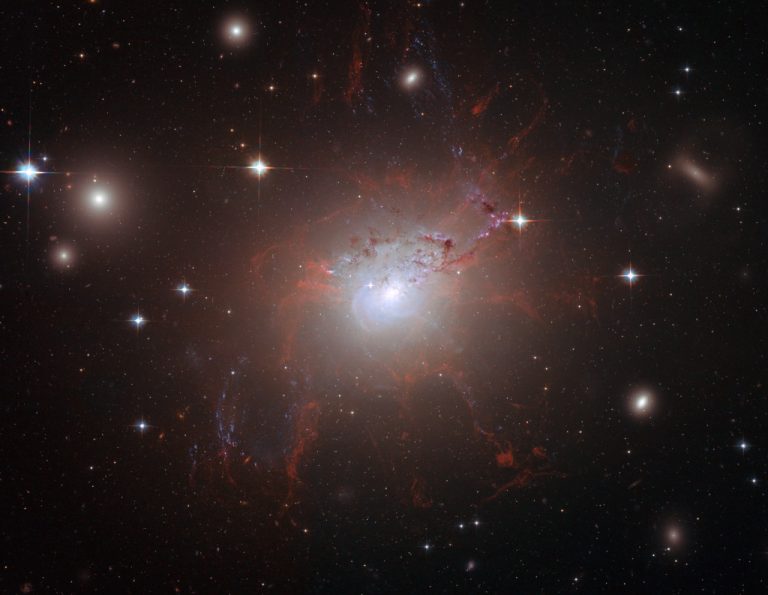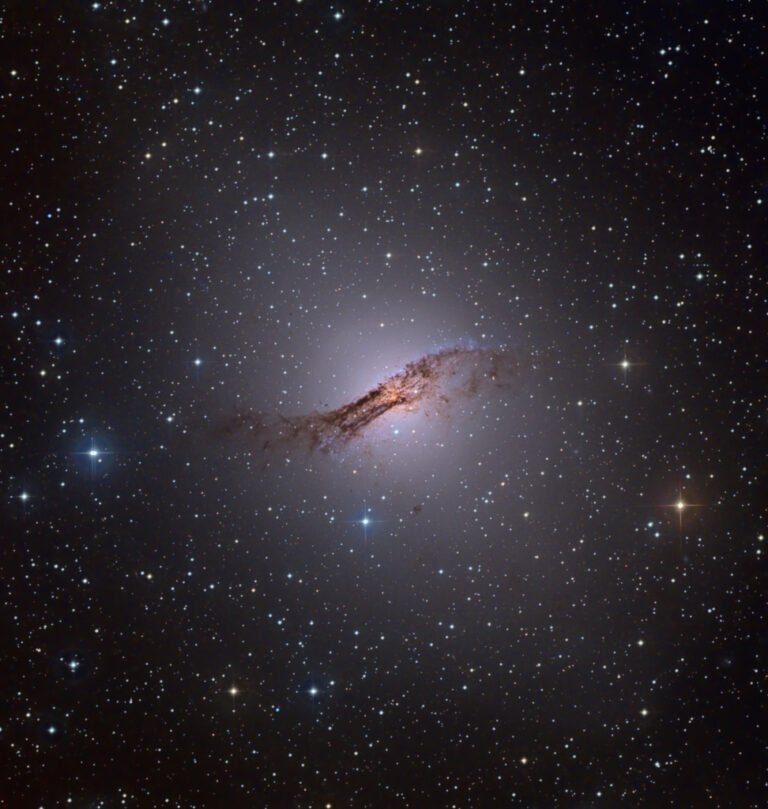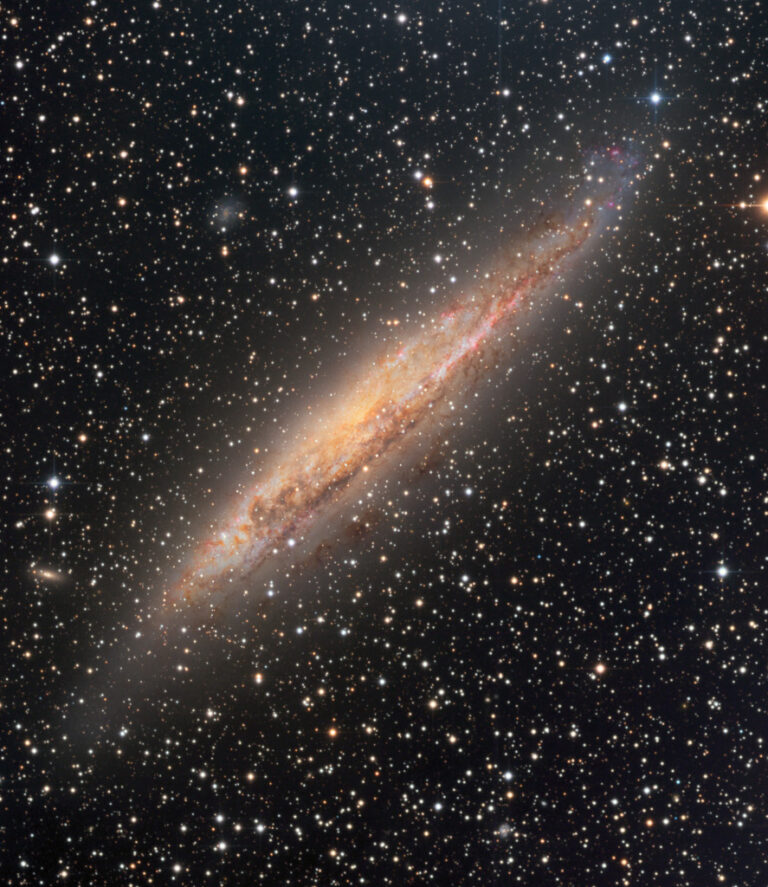活跃星系NGC 1275
2023年1月26日 Active Galaxy NGC 1275 Image Credit: NASA, ESA, Hubble Heritage, A. Fabian (University of Cambridge, UK) Explanation: Active galaxy NGC 1275 is the central, dominant member of the large and relatively nearby Perseus Cluster of Galaxies. Wild-looking at visible wavelengths, the active galaxy is also a prodigious source of x-rays and radio emission. NGC 1275 accretes matter as entire galaxies fall into it, ultimately feeding a supermassive black hole at the galaxy’s core. This color composite image made from Hubble Space Telescope data recorded during 2006. It highlights the resulting galactic debris and filaments of glowing gas, some up to 20,000 light-years long. The filaments persist in NGC 1275, even though the turmoil of galactic collisions should destroy them. What keeps the filaments together?…



